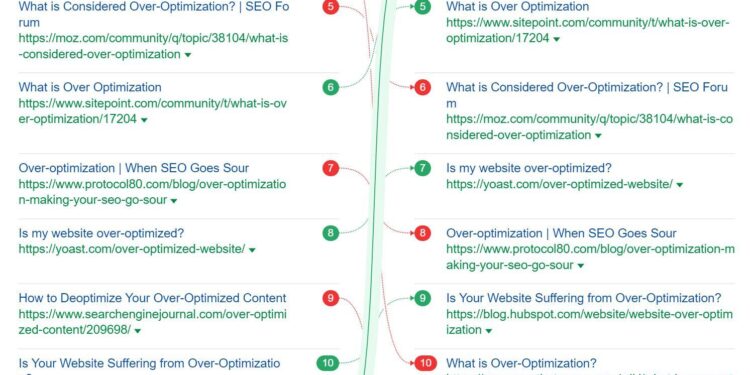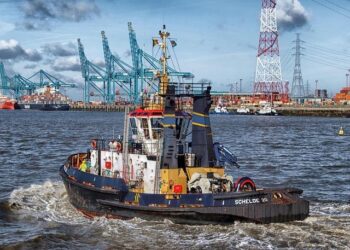The latest comprehensive analysis of Belgium’s construction sector is set to provide critical insights for industry stakeholders with the release of the “Belgium Construction Industry Report 2025” by ResearchAndMarkets.com. Covering the period from 2020 to 2029, the report offers an in-depth examination of key segments including commercial, industrial, infrastructure, energy and utilities, institutional, and residential construction. As Belgium navigates evolving economic conditions and ambitious development plans, this report delivers valuable forecasts, project analytics, and emerging trends that are poised to shape the country’s built environment over the coming decade. Industry leaders, investors, and policymakers alike will find this authoritative resource essential for informed decision-making in a rapidly changing market.
Belgium Construction Industry Set for Steady Growth Amid Diverse Sector Expansion
The Belgium construction sector is poised for consistent expansion, driven by a mix of dynamic segments including commercial, industrial, and residential developments. Urbanization and increasing demand for sustainable infrastructure projects have sparked a significant boost in both public and private investments. Industry experts highlight that energy and utilities projects are gaining momentum as the country accelerates its transition to greener solutions. Meanwhile, institutional construction remains a solid pillar, supported by government initiatives to improve healthcare, education, and public amenities.
Key growth factors can be summarized as follows:
- Robust infrastructure investment fueled by national and EU-level funding programs
- Rising demand for eco-friendly building solutions aligned with Belgium’s climate goals
- Expansion in industrial facilities driven by logistics and manufacturing sectors
- Increased residential projects catering to urban population growth and housing shortages
- Modernization of energy and utility systems to support sustainable urban living
| Sector | Projected CAGR % (2020-2029) | Key Drivers |
|---|---|---|
| Commercial | 4.2% | Retail space modernization, office expansion |
| Industrial | 5.0% | Logistics growth, manufacturing upgrades |
| Infrastructure | 3.8% | Transport projects, urban mobility |
| Energy & Utilities | 6.1% | Renewable energy integration, grid modernization |
| Institutional | 3.5% | Healthcare, education facility improvements |
| Residential | 4.5% | Urban housing demand, sustainability standards |
In-Depth Analysis Reveals Key Drivers Shaping Commercial and Infrastructure Projects
Recent market dynamics in Belgium’s commercial and infrastructure sectors demonstrate a complex interplay of economic, regulatory, and technological factors driving project development. Rising urbanization and the government’s commitment to sustainable growth have fueled investments in large-scale infrastructure initiatives, notably in transportation and energy networks. These projects are increasingly influenced by stringent environmental standards and the integration of smart technologies, pushing developers to innovate in design and execution. Additionally, supply chain challenges and labor market constraints are shaping project timelines and costs, prompting a shift towards modular construction and pre-fabrication techniques to enhance efficiency.
The analysis identifies several pivotal drivers shaping the trajectory of upcoming ventures:
- Government incentives: Subsidies and funding schemes targeting green infrastructure and energy efficiency.
- Technological innovation: Adoption of Building Information Modelling (BIM) and IoT-enabled monitoring systems.
- Economic recovery efforts: Stimulus packages accelerating public-private partnerships in urban redevelopment.
- Regulatory environment: Evolving policies on carbon emissions and resource management influencing project design.
| Key Driver | Impact Level | Forecasted Change (2020-2029) |
|---|---|---|
| Government Funding | High | +35% |
| Technological Adoption | Medium | +50% |
| Environmental Regulations | High | +40% |
| Labor Market Constraints | Medium | -15% |
Strategic Recommendations Emphasize Sustainable Development and Technological Integration
Industry leaders and policymakers are channeling their focus towards integrating sustainable practices within all phases of construction projects across Belgium. Emphasizing eco-friendly materials, energy-efficient designs, and waste reduction techniques, this strategic shift is projected to reduce the carbon footprint of upcoming developments significantly. The sector’s roadmap highlights critical areas such as renewable energy adoption, water conservation, and circular economy principles to future-proof infrastructures against environmental challenges.
Simultaneously, the advancement of digital tools and automation technologies is transforming project management and execution. From Building Information Modeling (BIM) to IoT-enabled monitoring systems, technology adoption promises enhanced precision, cost-efficiency, and timeline adherence. The following table outlines key technological innovations alongside their expected impact on construction efficiency and sustainability compliance:
| Technology | Primary Benefit | Sustainability Impact |
|---|---|---|
| Building Information Modeling (BIM) | Improved design accuracy and collaboration | Reduces material waste by 15% |
| IoT Sensors | Real-time monitoring of energy usage | Lowers energy consumption by 10% |
| 3D Printing | Accelerated construction processes | Minimizes on-site waste streams |
- Material Innovation: Use of recycled and low-impact construction materials.
- Energy Integration: Incorpor It looks like your message was cut off at the end. Would you like me to help you complete the last bullet point or assist with anything else related to the content you shared?
Closing Remarks
As Belgium’s construction landscape continues to evolve through the decade, the insights provided in the “Belgium Construction Industry Report 2025” offer a critical roadmap for stakeholders across commercial, industrial, infrastructure, energy and utilities, institutional, and residential sectors. Highlighting key developments, project analytics, and sector-specific trends from 2020 to 2029, the report underscores both challenges and growth opportunities shaping the nation’s built environment. For investors, policymakers, and industry players alike, staying informed through such comprehensive analyses is essential to navigating Belgium’s dynamic construction market and capitalizing on its future potential.
















